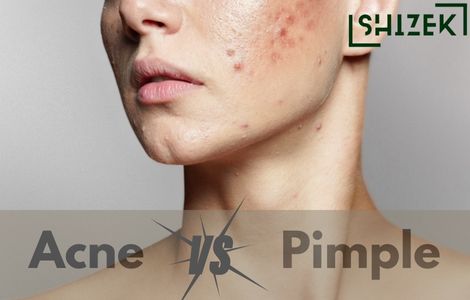Difference Between SmallPox and MonkeyPox

Smallpox and monkeypox are both viral diseases caused by distinct strains of the Orthopoxvirus family. While smallpox was successfully eradicated in 1980, monkeypox continues to affect populations, particularly in various regions of Africa and has exhibited global spread. Despite sharing similarities, these diseases diverge significantly in terms of severity, modes of transmission, and preventative measures. This article presents a comprehensive comparative analysis of smallpox and monkeypox to elucidate their distinguishing features.
Table of Content
- What is the Difference Between SmallPox and MonkeyPox: SmallPox vs MonkeyPox
- What is MonkeyPox?
- What is SmallPox?
- Key Differences and Similarities Between MonkeyPox
What is the Difference Between SmallPox and MonkeyPox?
| Parameter | Smallpox | Monkeypox |
| Causative Virus | Variola virus | Monkeypox virus (a zoonotic virus) |
| Eradication | Eradicated in 1980 | Endemic in parts of Africa; global outbreaks |
| Transmission | Human-to-human via respiratory droplets | Animal-to-human; also human-to-human |
| Fatality Rate | Around 30% | 1-10%, depending on the clade |
| Symptoms | High fever, fatigue, skin rashes, pustules | Fever, lymph node swelling, rash, pustules |
| Incubation Period | 7-17 days | 5-21 days |
| Vaccine Availability | Smallpox vaccine (not in use post-eradication) | Smallpox vaccine (used for prevention) |
| Primary Hosts | Exclusively humans | Animals (mainly rodents) and humans |
| Rash Progression | It starts in the mouth and spreads to the limbs | Starts on the face, hands, feet, spreads |
| Preventive Measures | Smallpox vaccine | Smallpox vaccine, isolation, hygiene |
What is MonkeyPox?
Monkeypox is a zoonotic viral disease caused by the Monkeypox virus, part of the Orthopoxvirus genus, which also includes smallpox. It was first discovered in monkeys in 1958, but the first human case was identified in 1970 in the Democratic Republic of Congo.
Key points about mpox:
- Transmission: It spreads through close contact with an infected person or animal.
- Symptoms: Symptoms include fever, headache, muscle aches, swollen lymph nodes, and a rash that can look like pimples or blisters.
- Treatment: There is no specific treatment for mpox, but the symptoms usually resolve on their own.
- Prevention: Vaccination against smallpox can also provide some protection against mpox.
Mpox is a rare disease that is typically found in parts of Central and West Africa. However, there have been outbreaks in other parts of the world, including the United States and Europe.
It’s important to note that the name “monkeypox” has been changed to “mpox” to avoid stigmatizing the disease.
What is SmallPox?
Smallpox was a highly contagious and deadly viral disease caused by the Variola virus. It primarily affected humans and was a major public health threat for centuries until it was declared eradicated in 1980, following a global vaccination campaign led by the World Health Organization (WHO).
Key points about smallpox:
- Cause: It was caused by the variola virus.
- Transmission: It spread from person to person through contact with infected individuals or contaminated materials.
- Symptoms: The rash began on the face and hands, then spread to the rest of the body. It progressed to pustules, scabs, and eventually scars. Other symptoms included fever, headache, and fatigue.
- Mortality: About 1 in 3 people who contracted smallpox died.
- Eradication: Thanks to a successful vaccination campaign, smallpox was declared eradicated in 1980.
There have been no naturally occurring cases since 1977.
Today, smallpox is considered a disease of the past. However, due to the potential for bioterrorism, research and preparedness efforts continue to ensure that we are ready to respond to any future outbreaks.
Similarities and Differences Between SmallPox and MonkeyPox
-
- Causative Virus Family: Both diseases are caused by viruses from the Orthopoxvirus genus—smallpox by the Variola virus and monkeypox by the Monkeypox virus.
- Rash and Skin Lesions: Both smallpox and monkeypox cause a characteristic rash that develops into fluid-filled pustules. The rash follows a similar progression from macules (flat spots) to papules (raised spots), vesicles (blisters), and finally pustules.
- Human-to-Human Transmission: Both diseases can spread from one human to another, though monkeypox is also zoonotic (can spread from animals to humans), unlike smallpox.
- Eradication:
-
- Smallpox: Declared eradicated in 1980 following a successful global vaccination campaign.
- Monkeypox: Still endemic in parts of Africa, with occasional outbreaks worldwide.
- Transmission:
-
- Smallpox: Transmitted exclusively from human to human via respiratory droplets or contact with contaminated items.
- Monkeypox: Transmitted from animals to humans (primarily rodents) and from human to human through direct contact with body fluids, respiratory droplets, or lesions.
- Fatality Rate:
-
- Smallpox: Has a higher fatality rate, around 30%.
- Monkeypox: Fatality rate is generally lower, ranging from 1-10%, depending on the virus strain.
- Primary Hosts:
-
- Smallpox: Humans were the only hosts of the virus.
- Monkeypox: Animals (especially rodents) are the primary hosts, with occasional spillover to humans.
- Vaccine Availability:
-
- Smallpox: Routine vaccination for smallpox is no longer necessary due to eradication.
- Monkeypox: Smallpox vaccines (like JYNNEOS) are used to prevent monkeypox in current outbreaks.
- Rash Progression:
-
- Smallpox: Rash begins in the mouth and spreads to the face, arms, and legs.
- Monkeypox: Rash often starts on the face and extremities, spreading to other parts of the body.
- Incubation Period:
- Smallpox: Typically 7-17 days.
- Monkeypox: Typically 5-21 days, with a slightly longer range.
Conclusion
Smallpox and monkeypox are related, but they differ in terms of their transmission, symptoms, and fatality rates. While smallpox has been eradicated, monkeypox continues to pose a threat, especially in Africa, though global outbreaks have increased in recent years. Preventative measures, including vaccination and isolation, are crucial to managing monkeypox.
























































































































